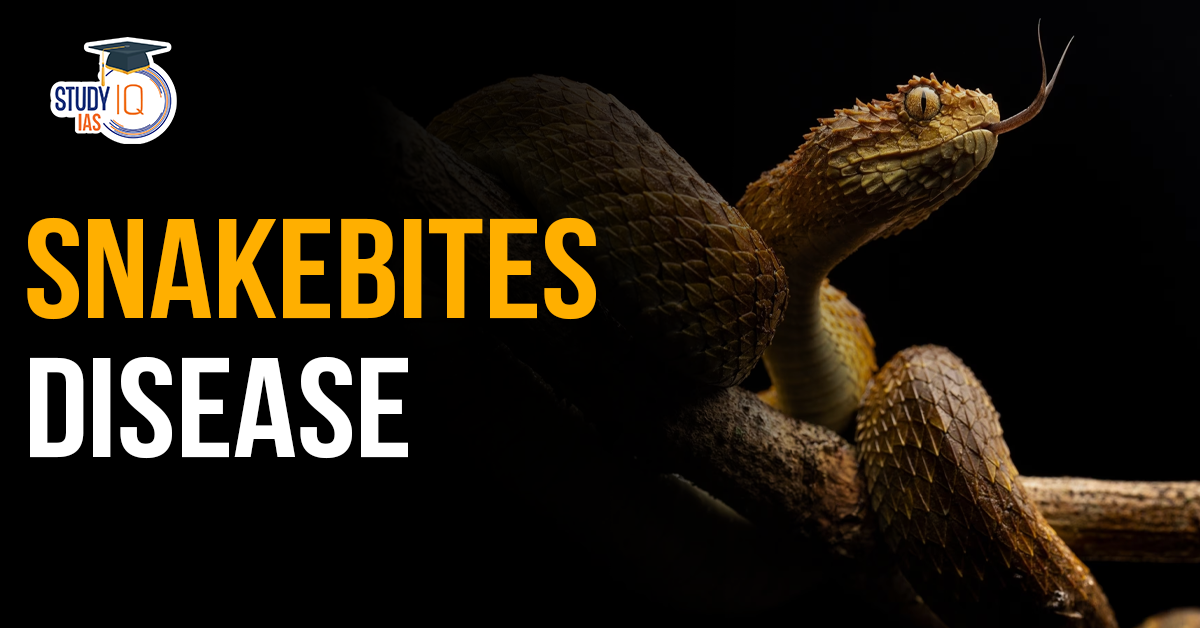Table of Contents
About Snake bite
- Snakebites can lead to acute medical emergencies that require immediate care.
- They can cause severe paralysis that can prevent breathing, can lead to a fatal hemorrhage, and damage different tissues.
- Snakebites need to be treated with antivenom to prevent death and severe symptoms.
Data on Snakebites in India
- India is home to 310 snake species, of which:
- 66 are venomous.
- 42 are mildly venomous.
- 23 species are medically significant due to their fatal venom.
- ‘Big Four’ snakes cause 90% of bites: Indian cobra, Common krait, Russell’s viper & Saw-scaled viper.
- Commercial polyvalent antivenom is effective for 80% of snakebites caused by the Big Four.
National Action Plan for Prevention and Control of Snakebite Envenoming (NAPSE)
- It was launched by the government in 2024 to halve snakebite deaths by 2030.
- It recommends making snakebites a notifiable disease.
- Major focus on high-risk states like: Bihar, Jharkhand, Madhya Pradesh, Odisha, Uttar Pradesh, Andhra Pradesh, Telangana, Rajasthan, Gujarat.
What Are Notifiable Diseases?
- Diseases which are legally required to be reported to the government for public health action.
- Examples: Tuberculosis, HIV, cholera, malaria, dengue, and hepatitis.
- Criteria:
- Likely to cause outbreaks.
- Lead to significant deaths.
- Require rapid public health interventions.


 World Press Freedom Index 2025: India's ...
World Press Freedom Index 2025: India's ...
 Coal Miners Day 2025: Date, History, The...
Coal Miners Day 2025: Date, History, The...
 World Press Freedom Day 2025, Theme, His...
World Press Freedom Day 2025, Theme, His...





















